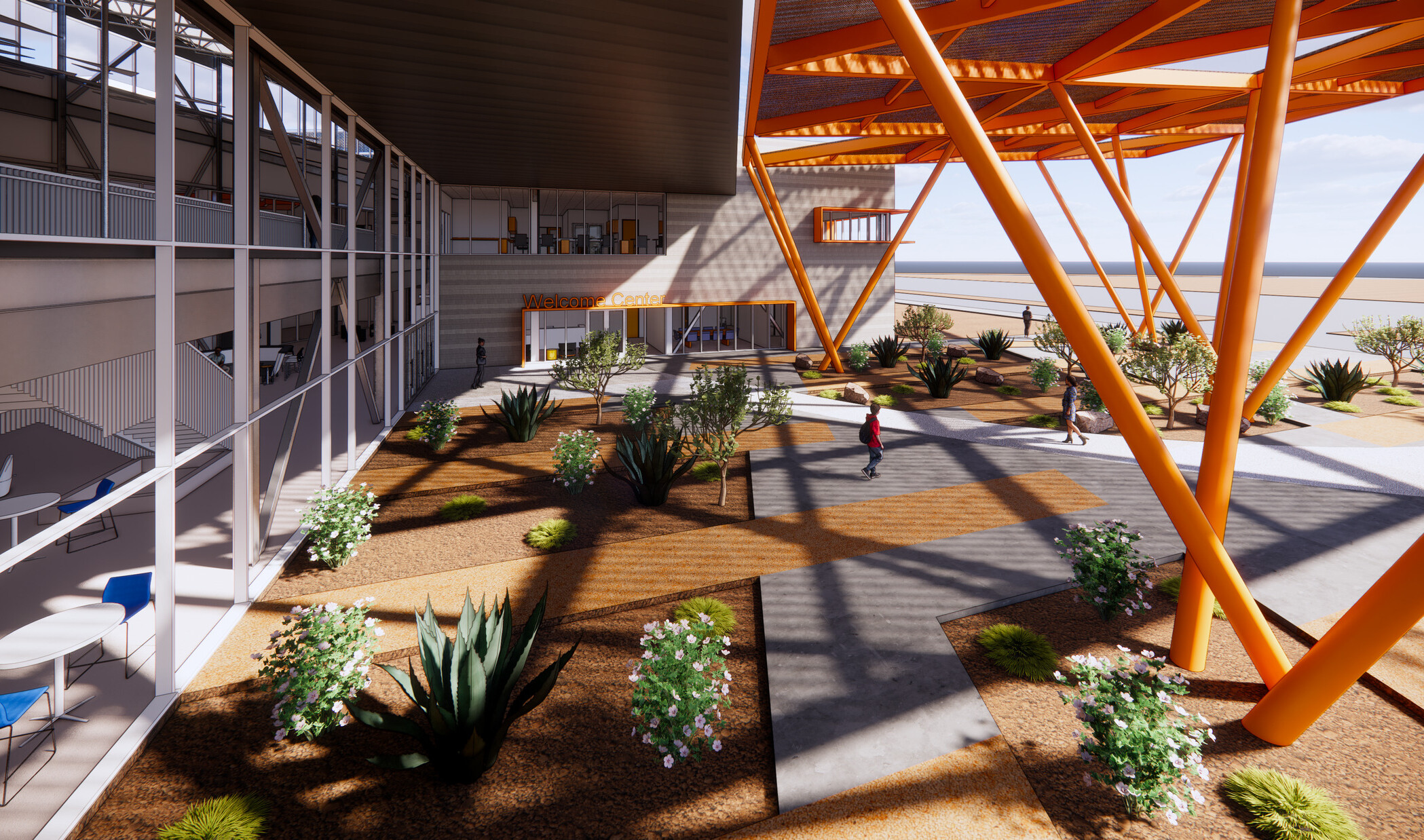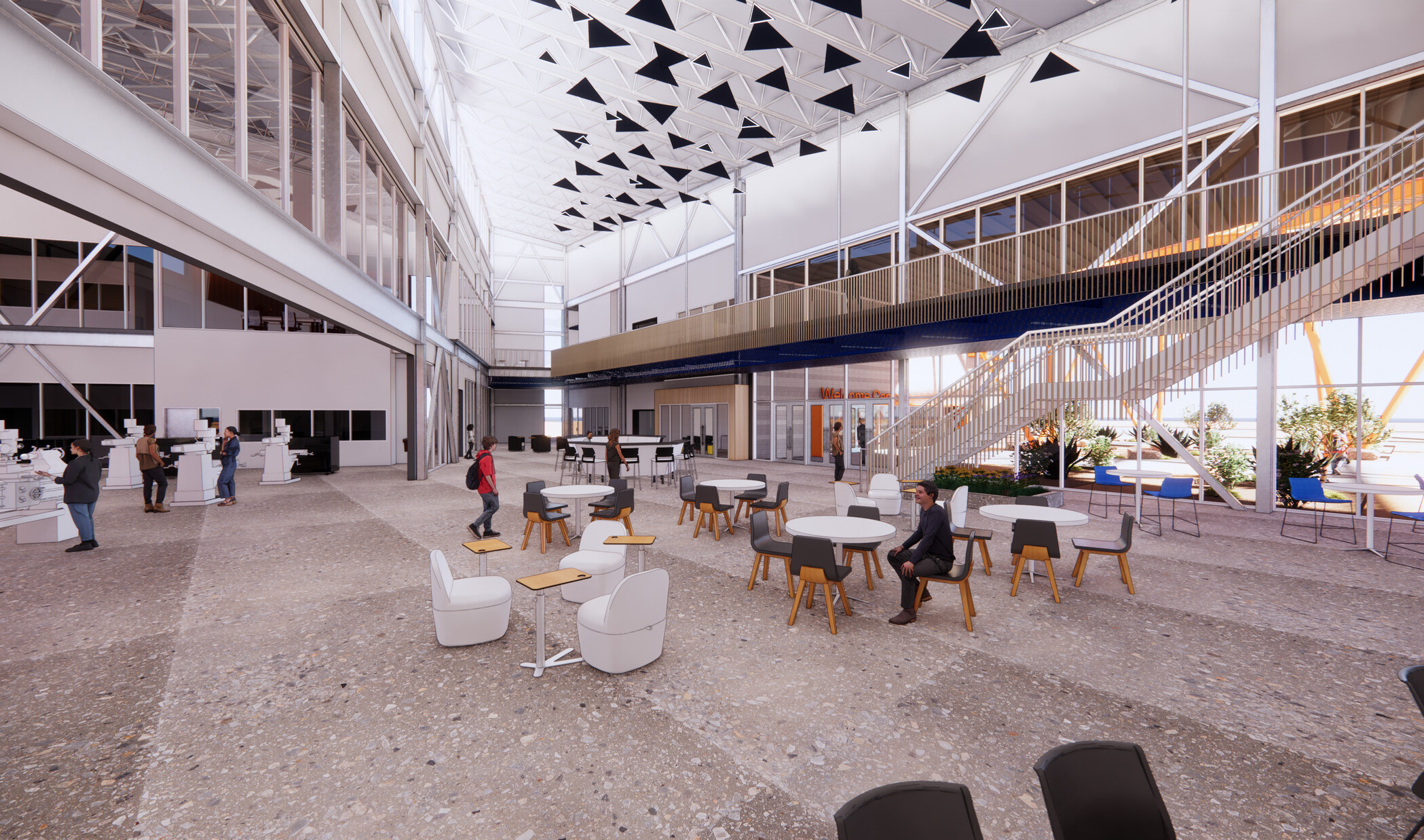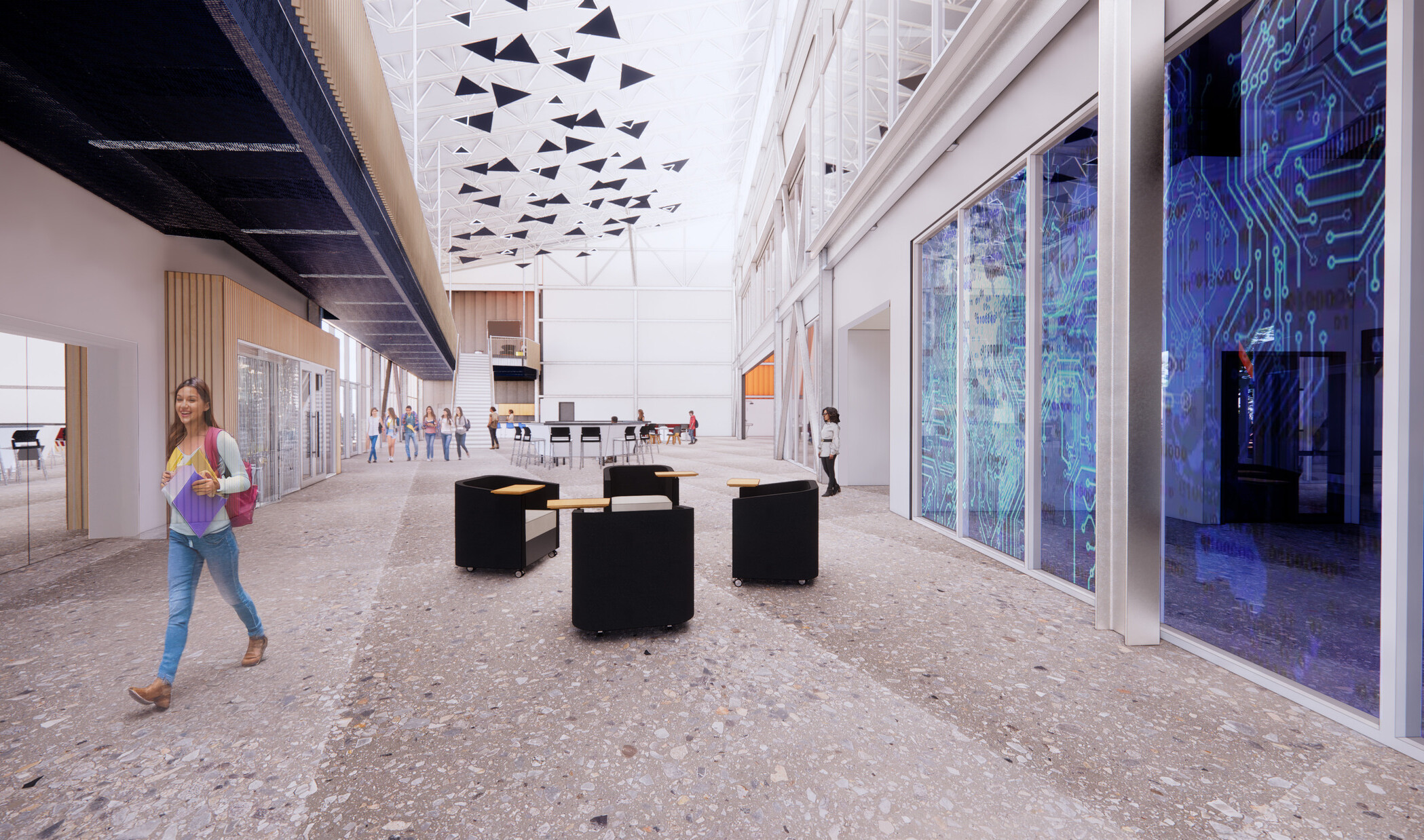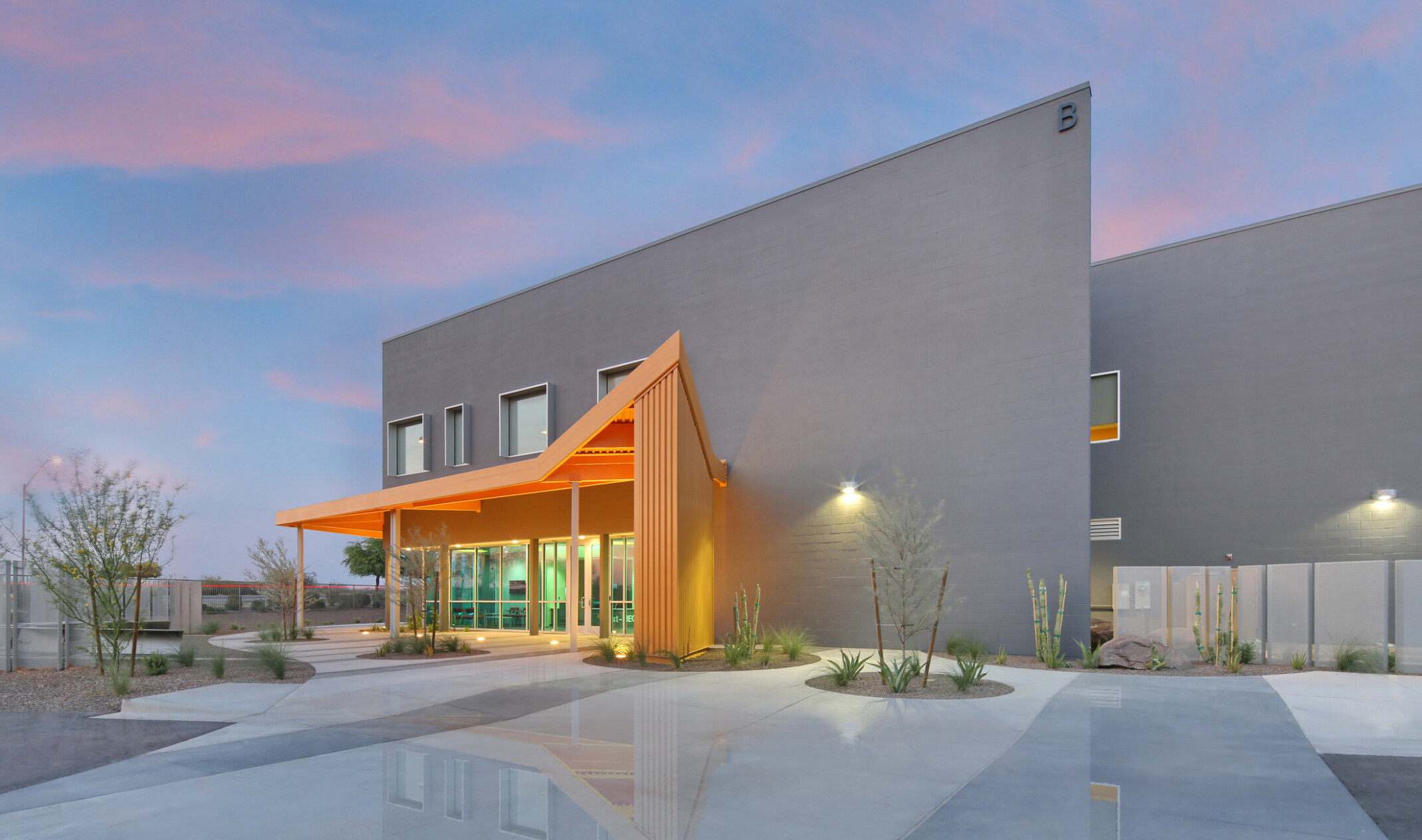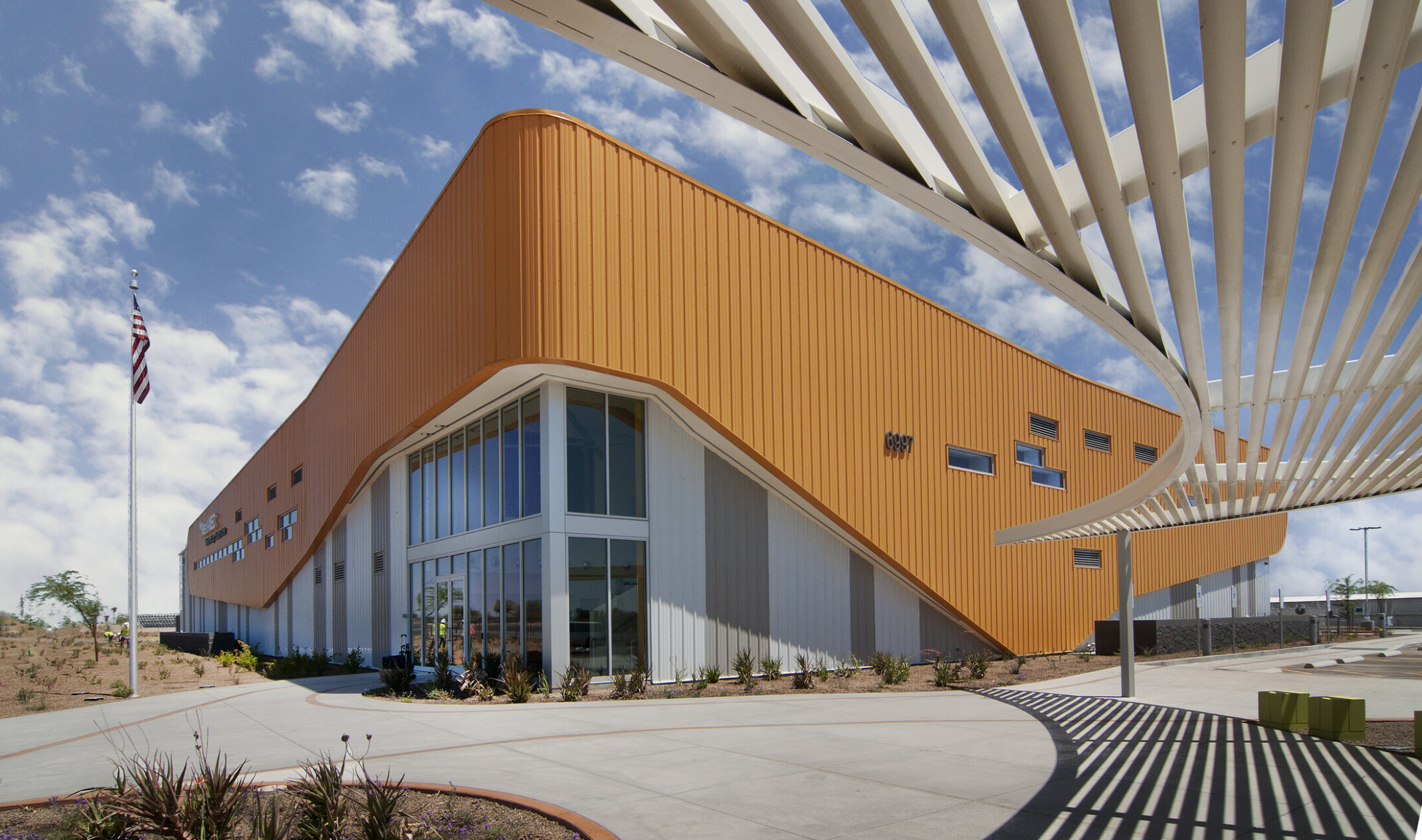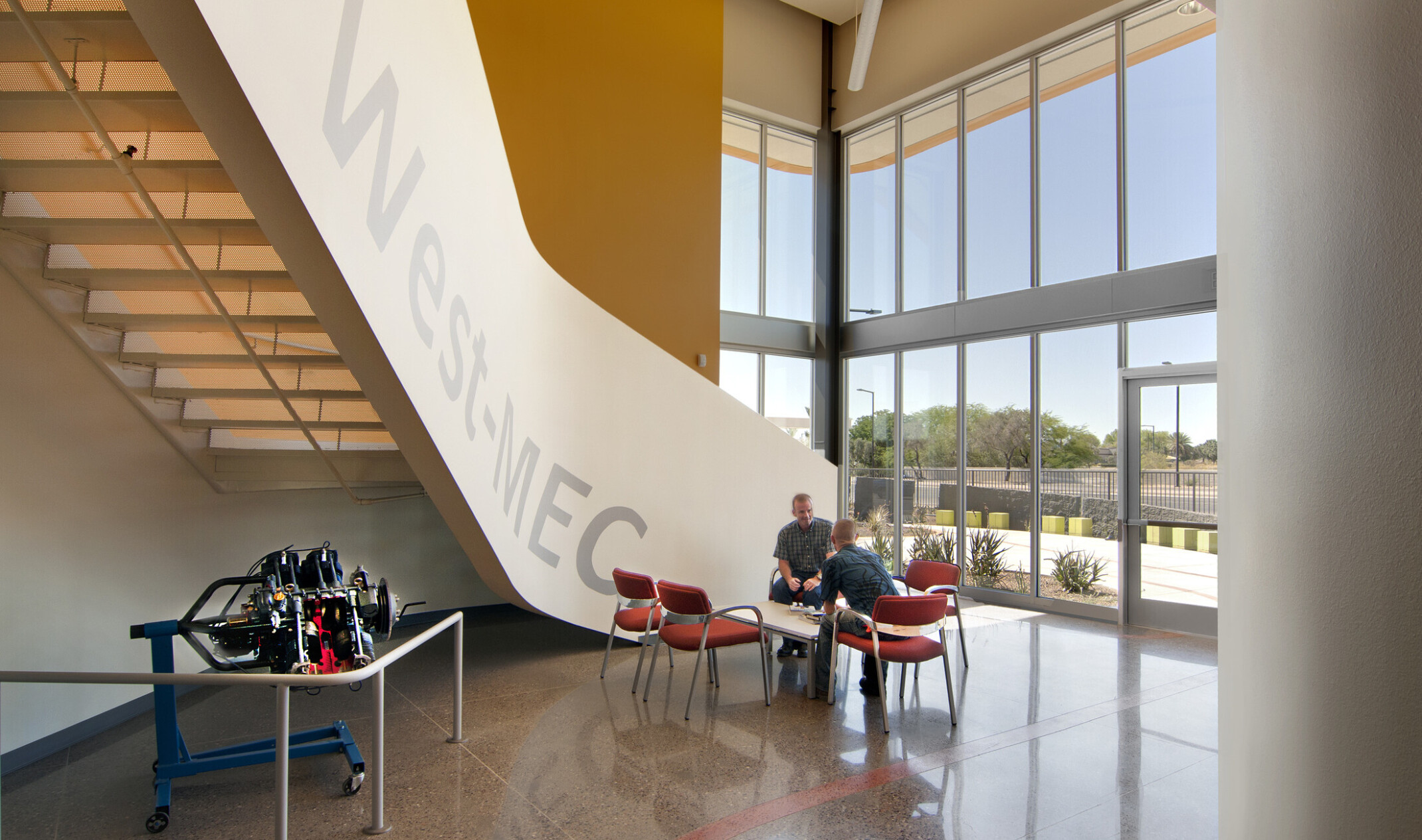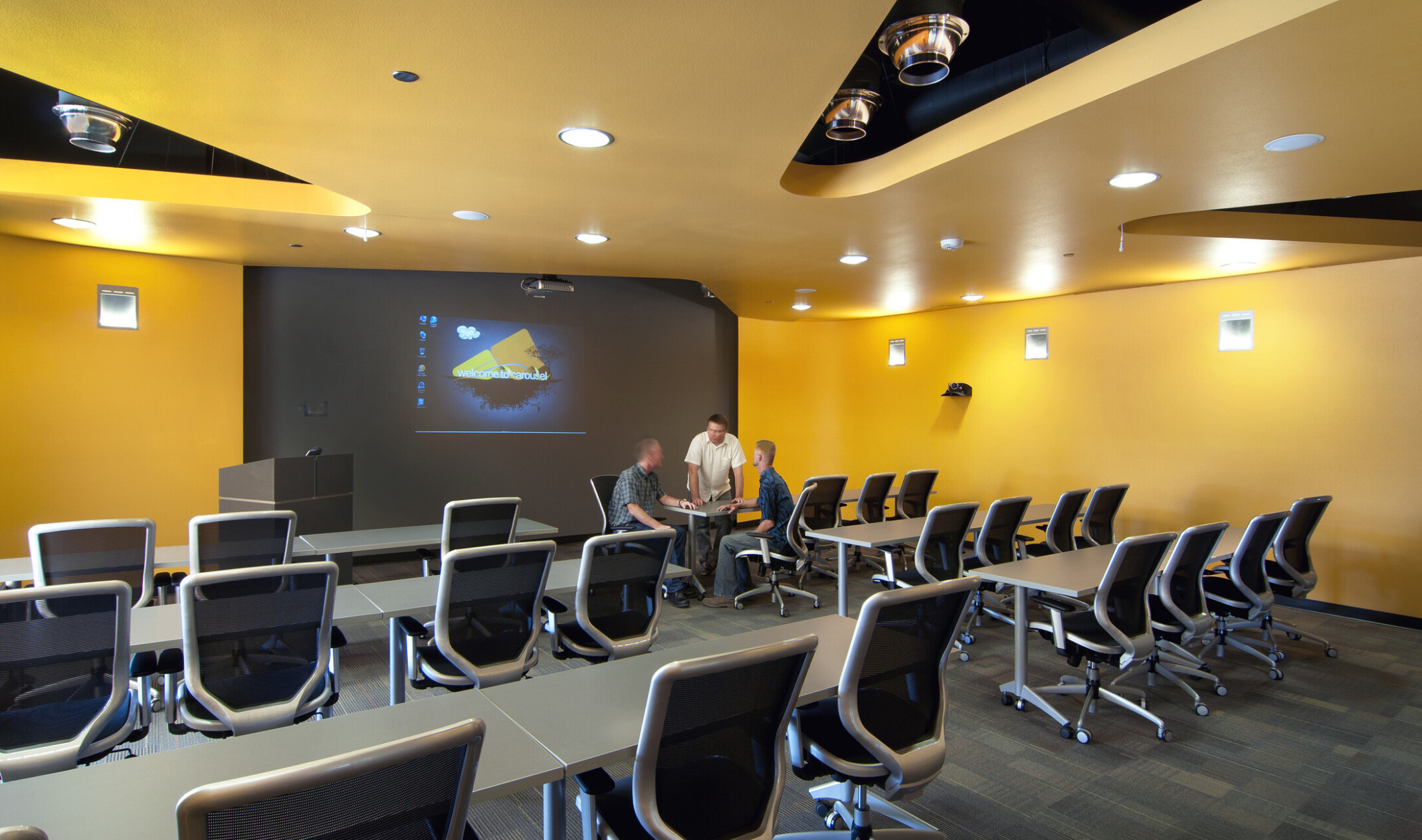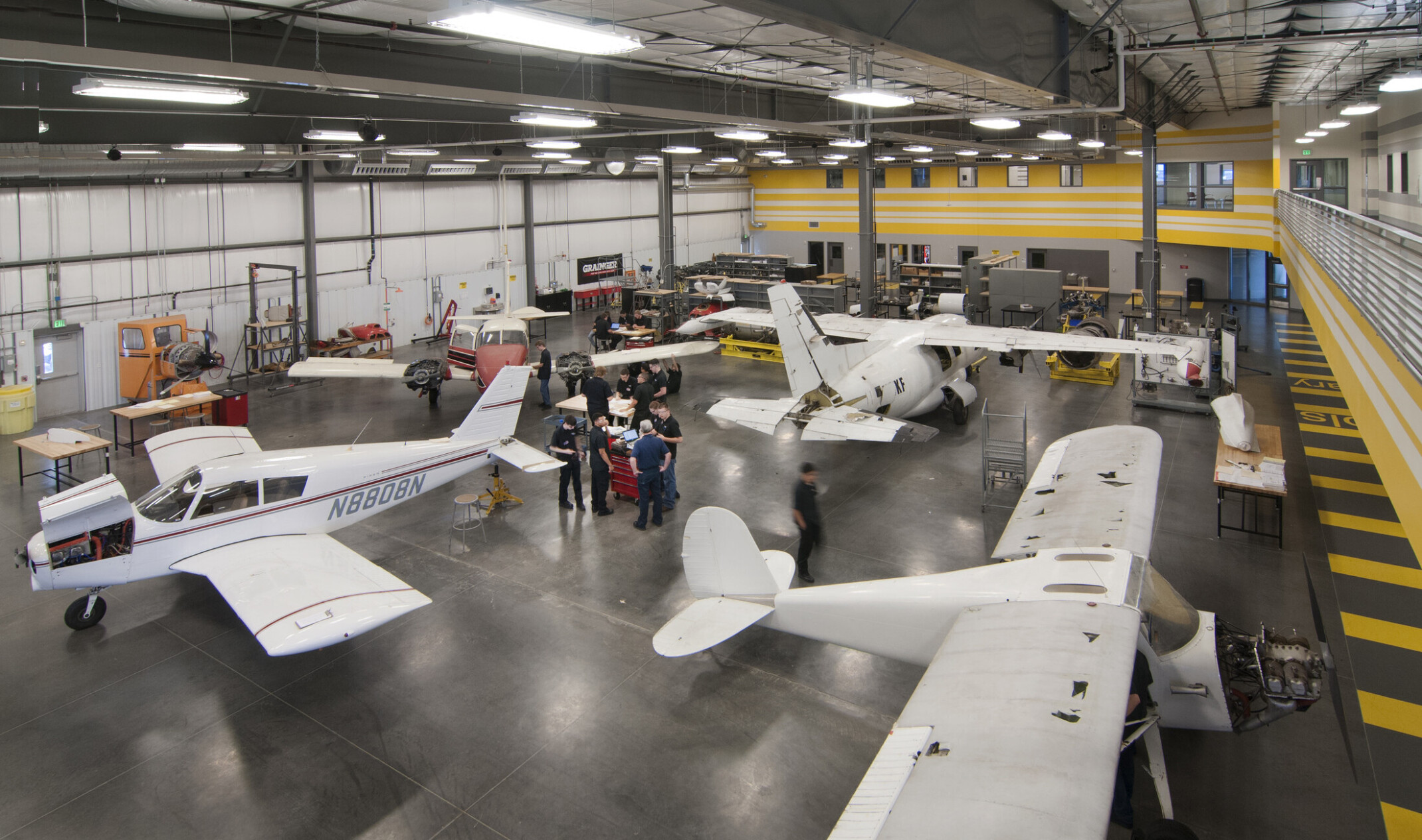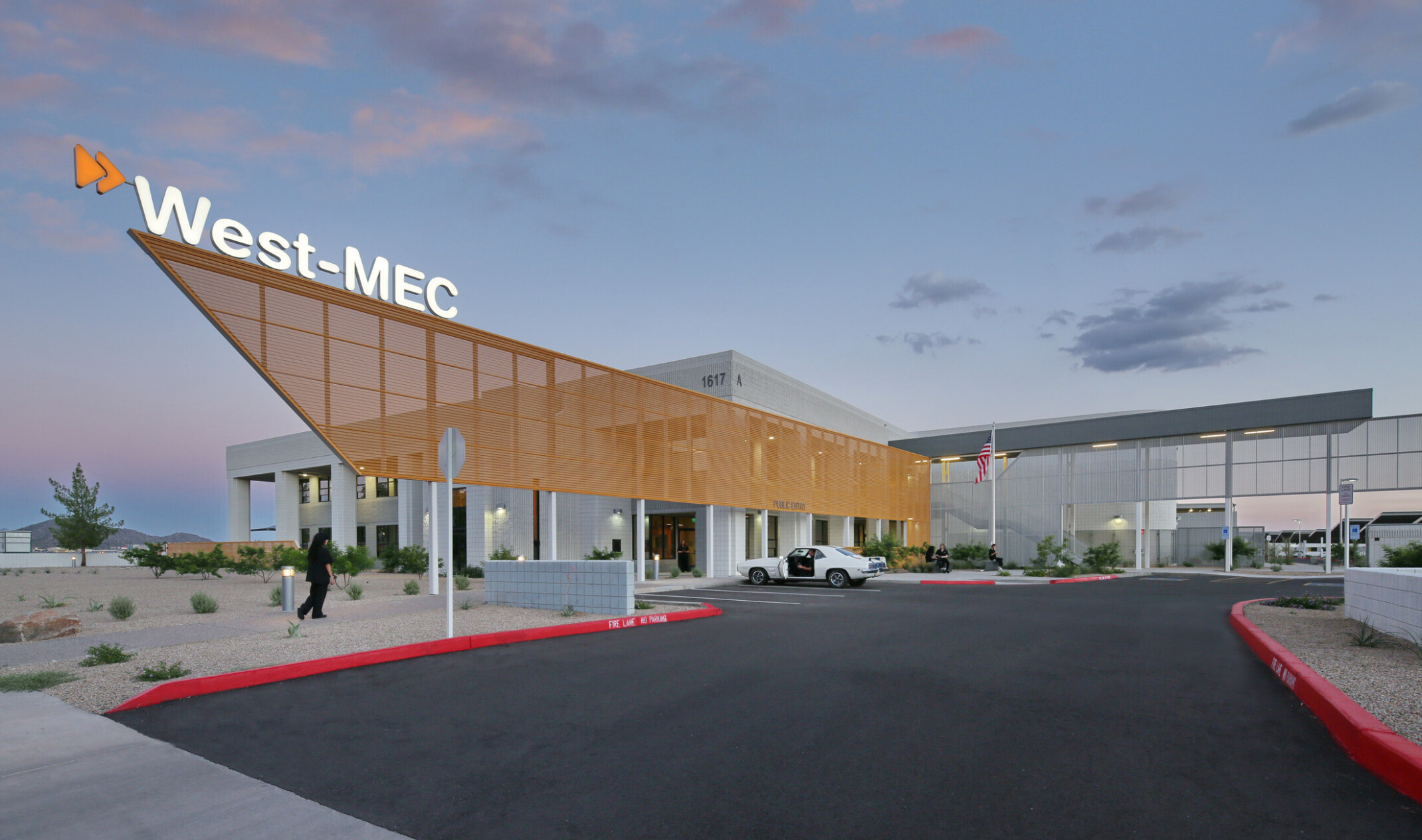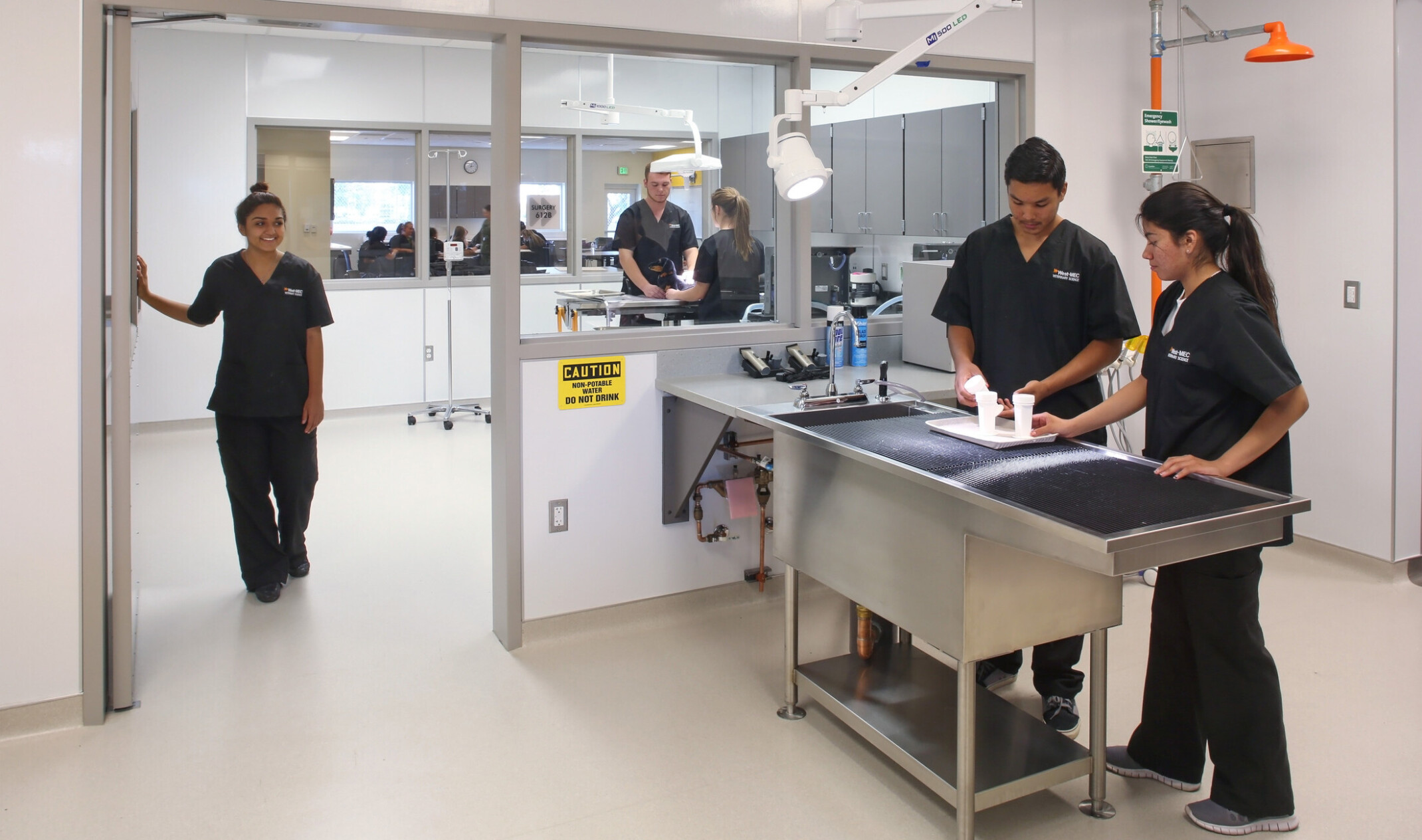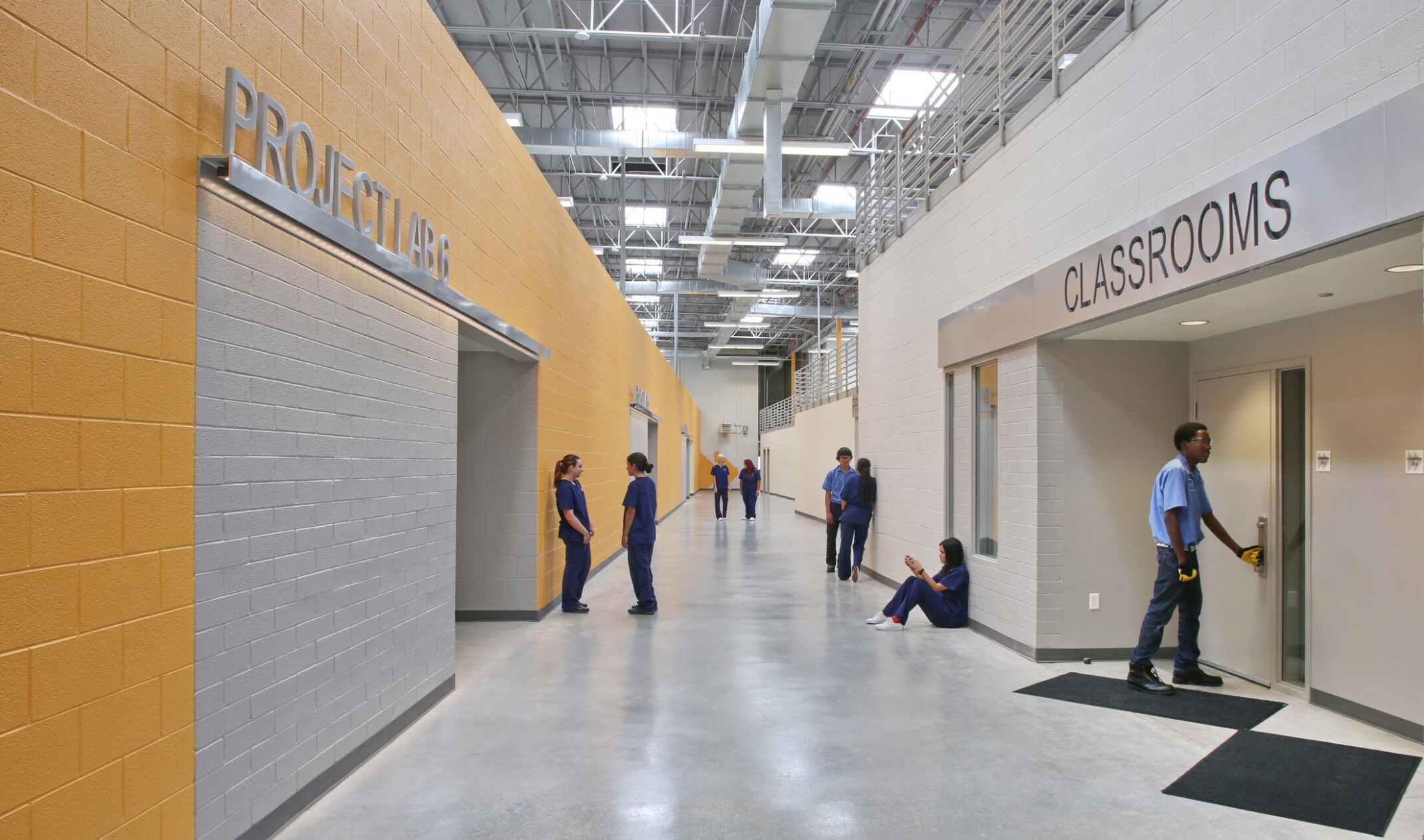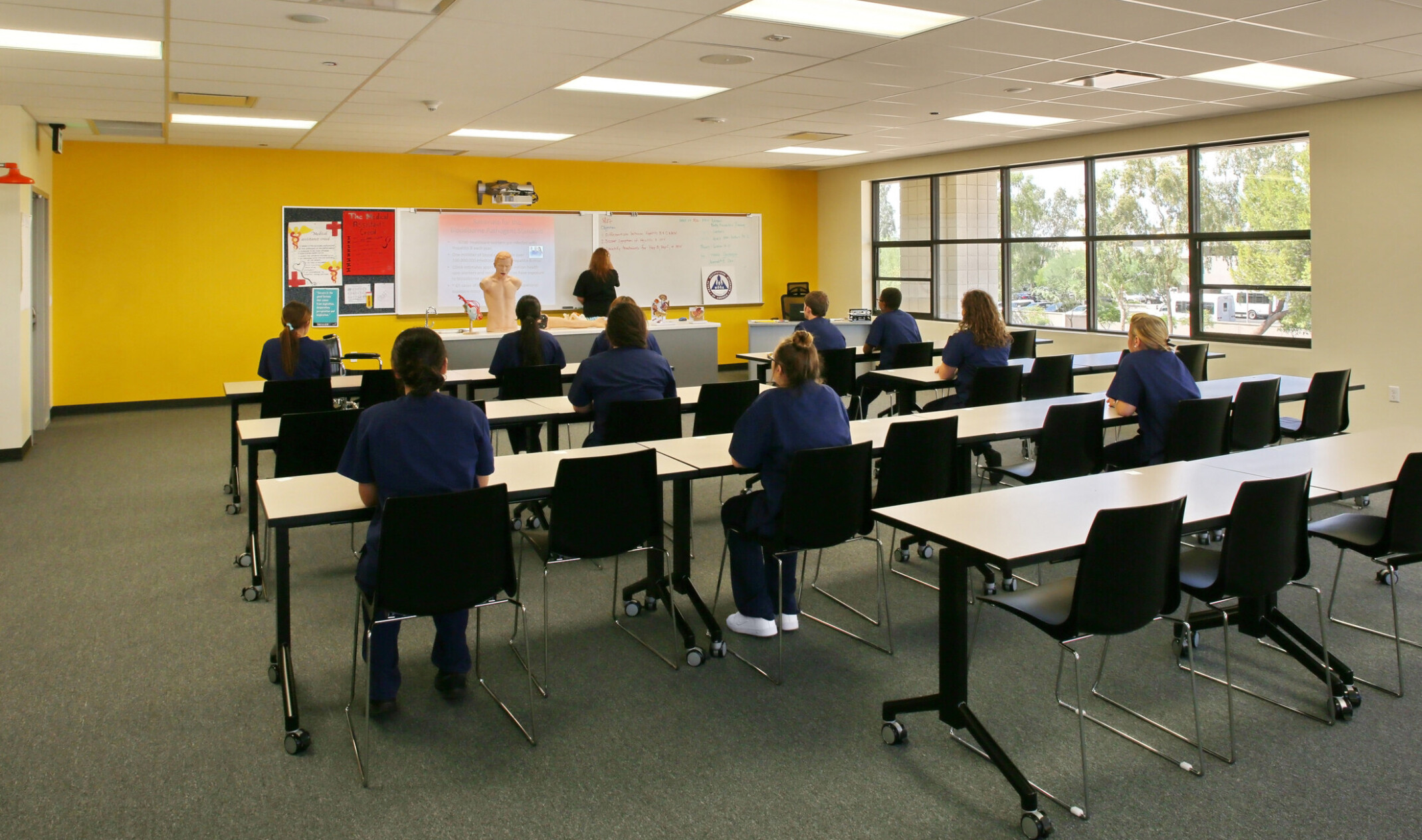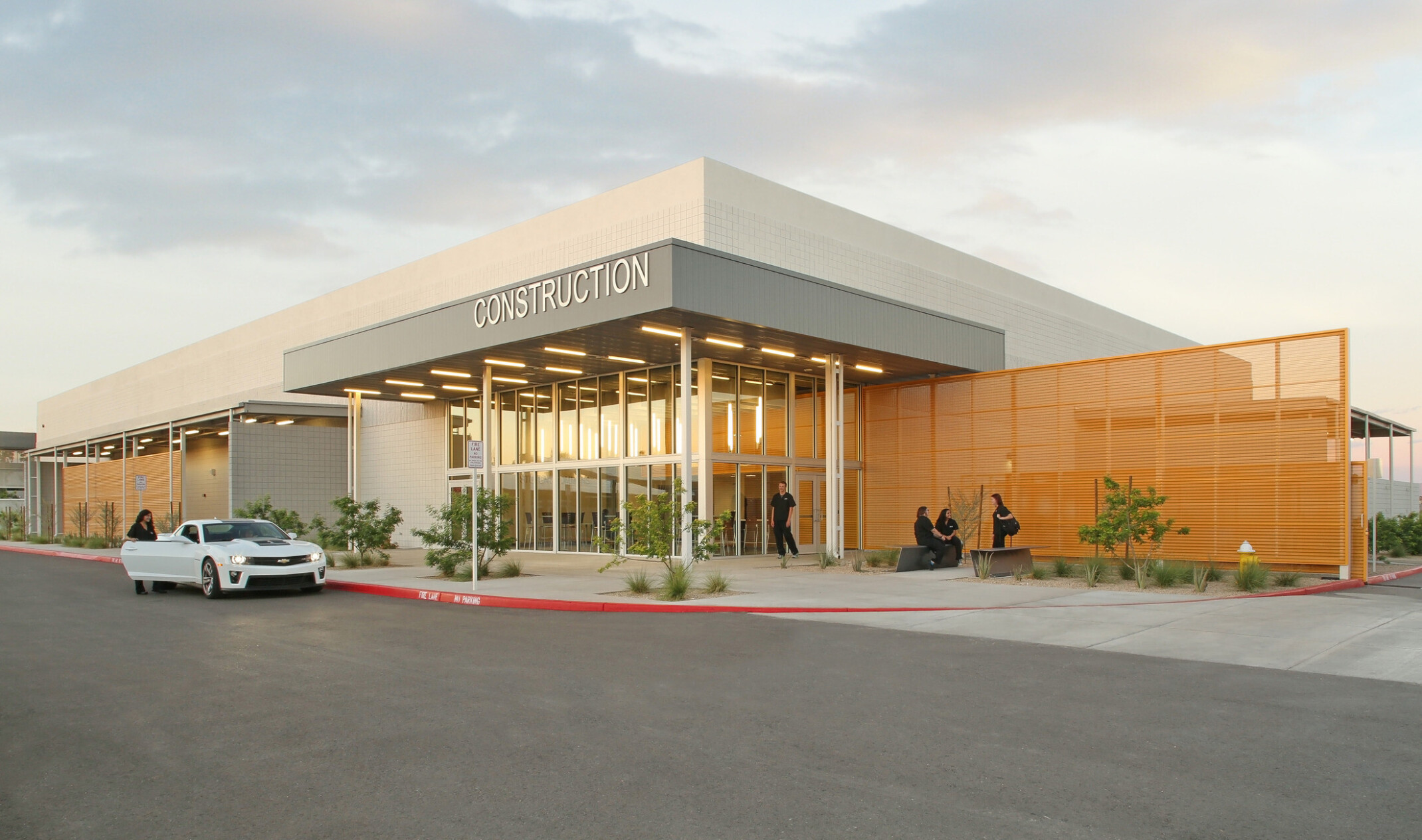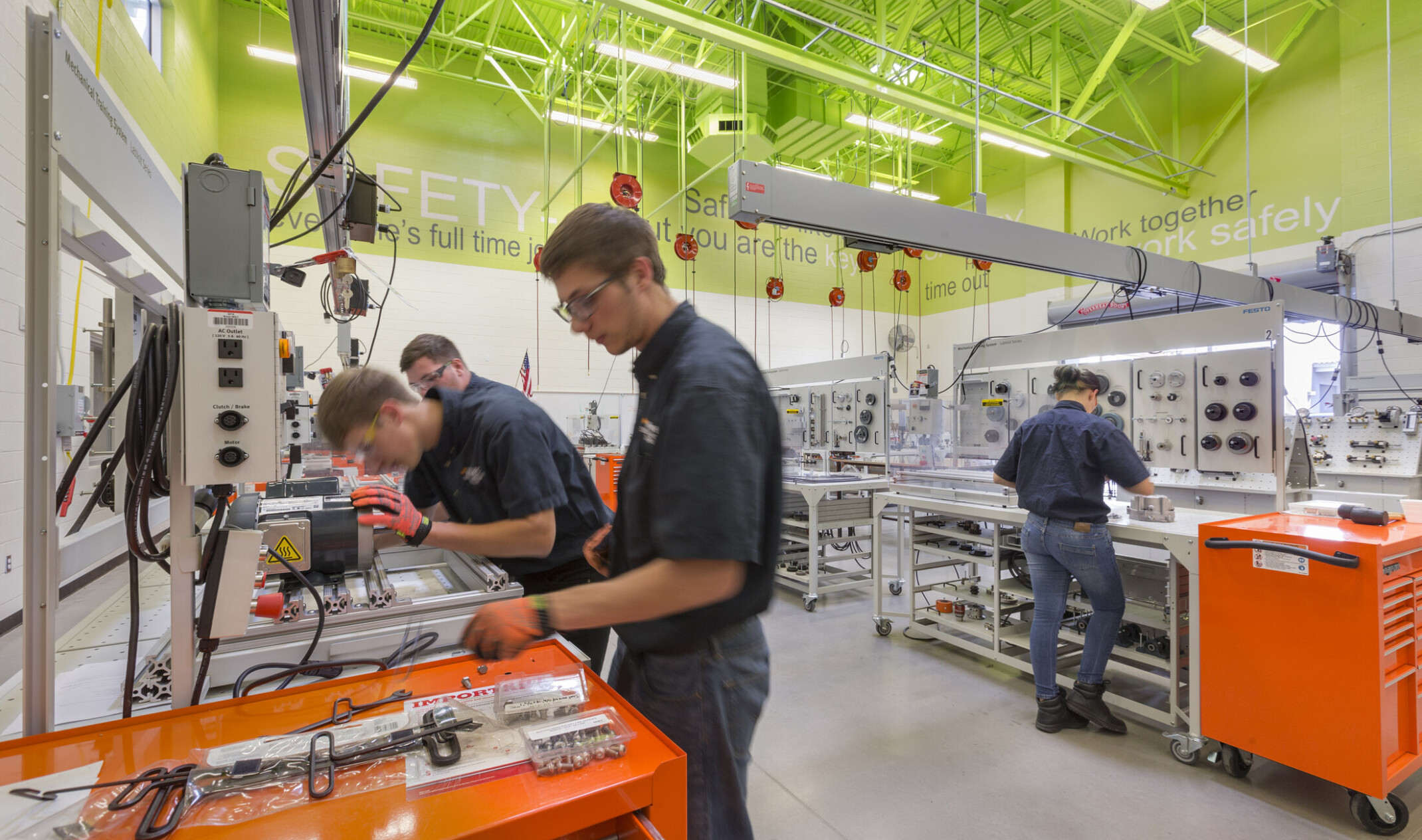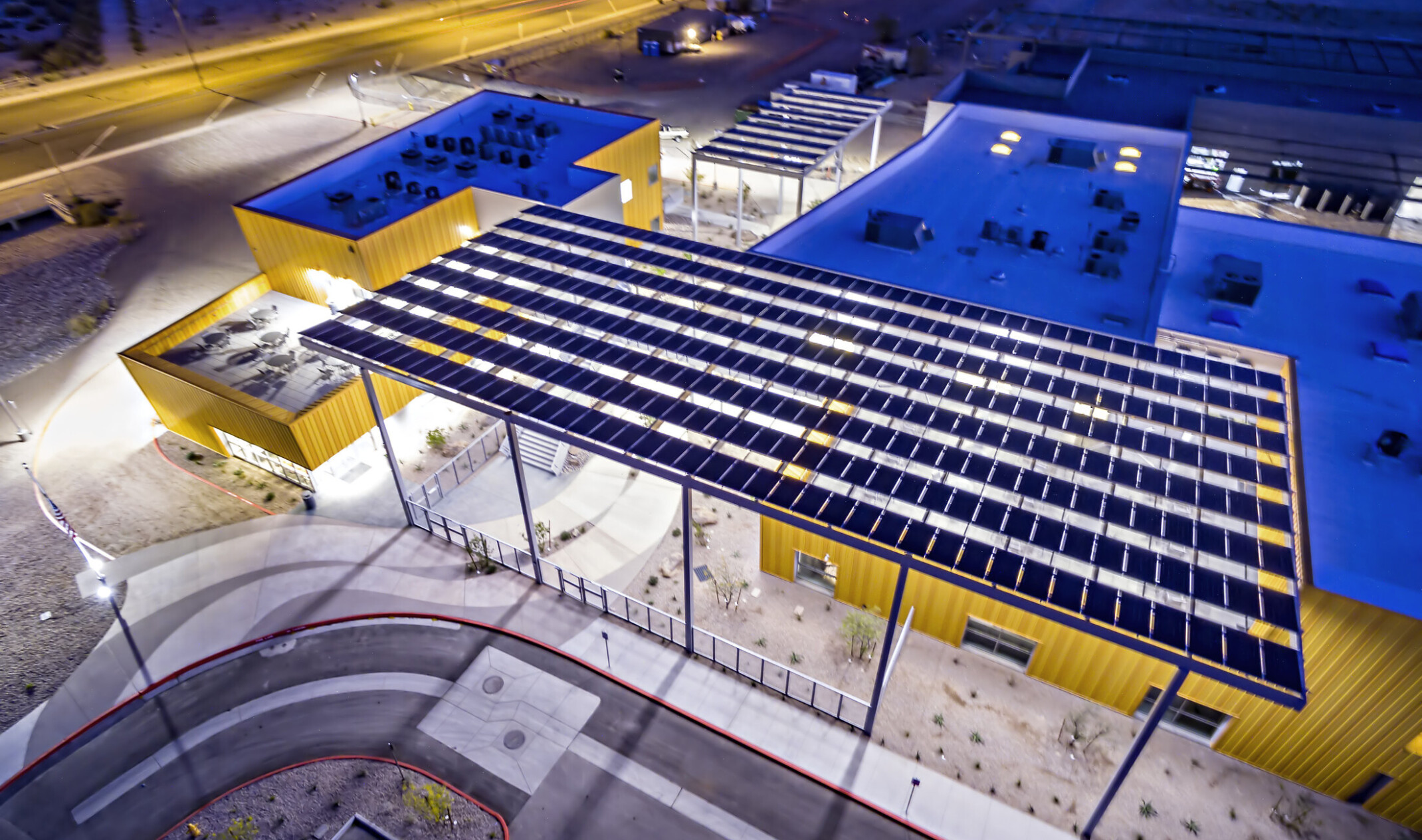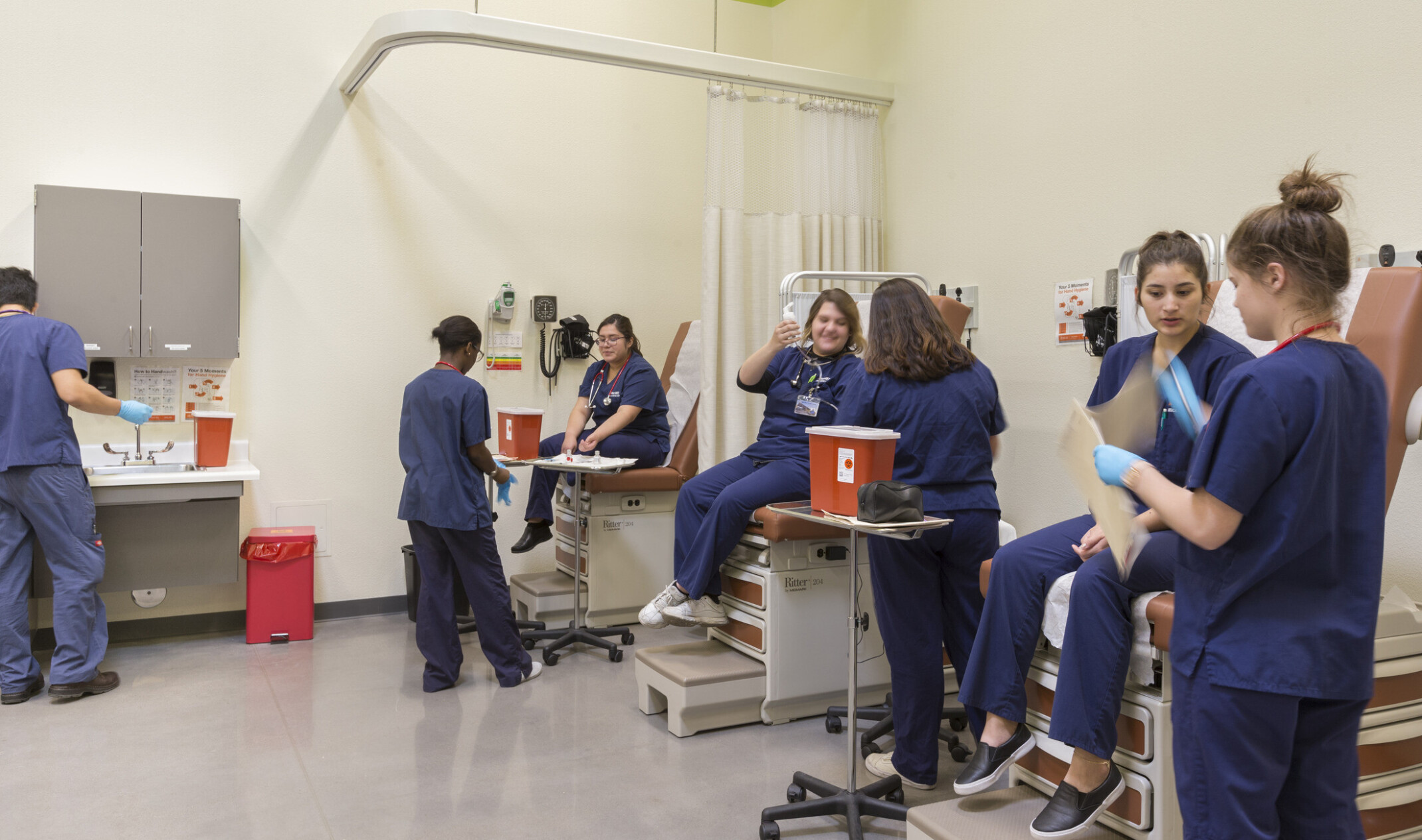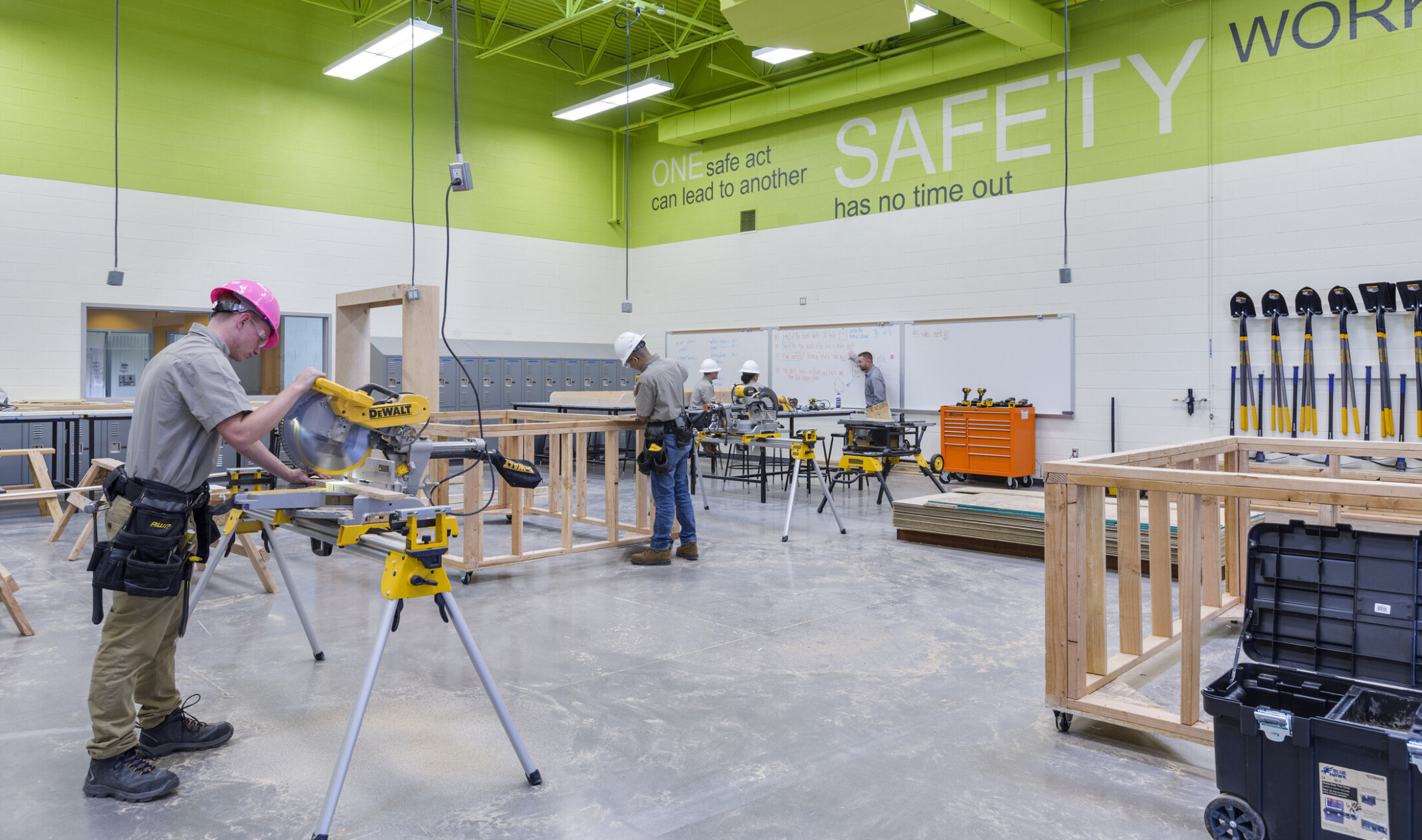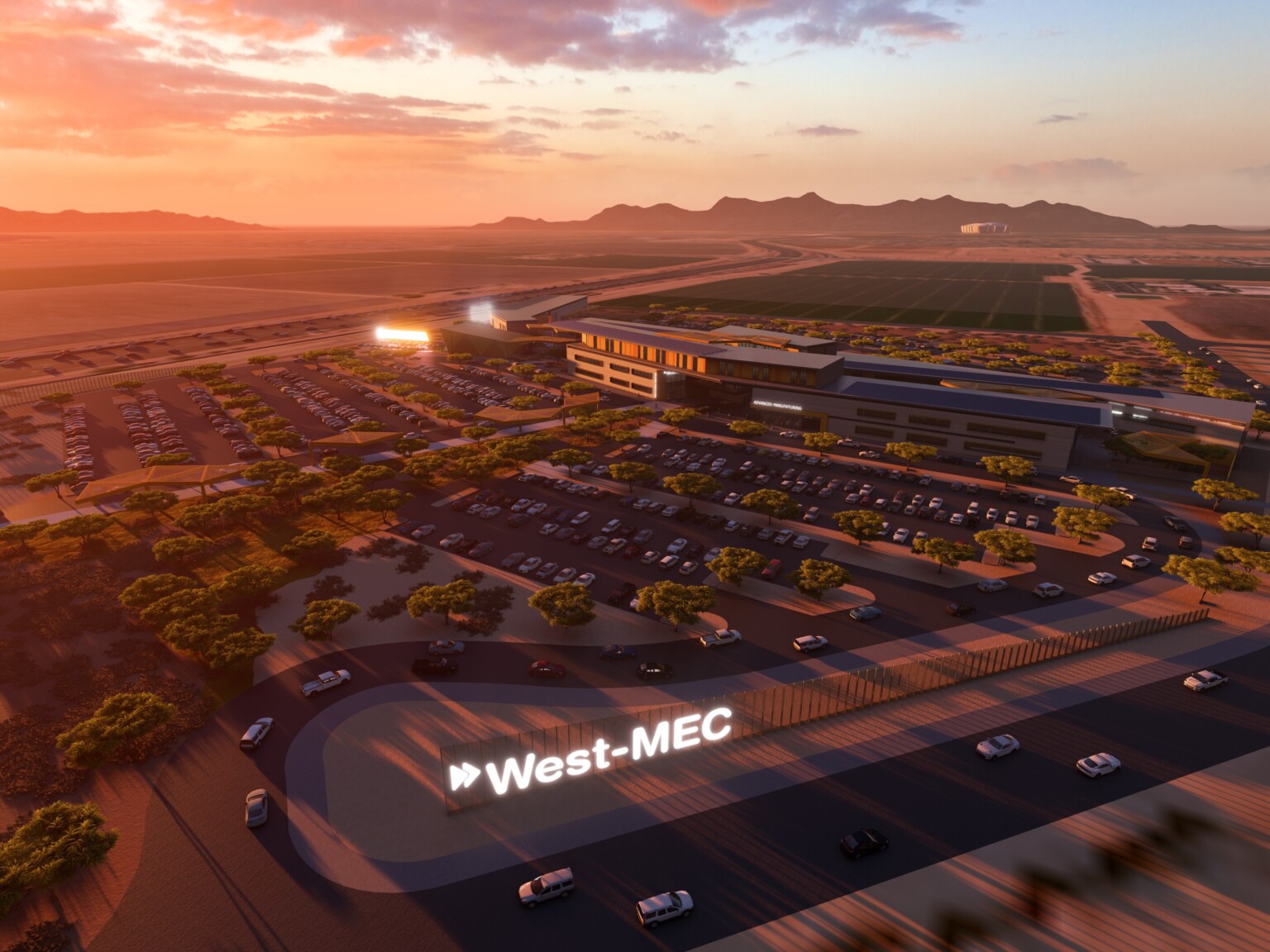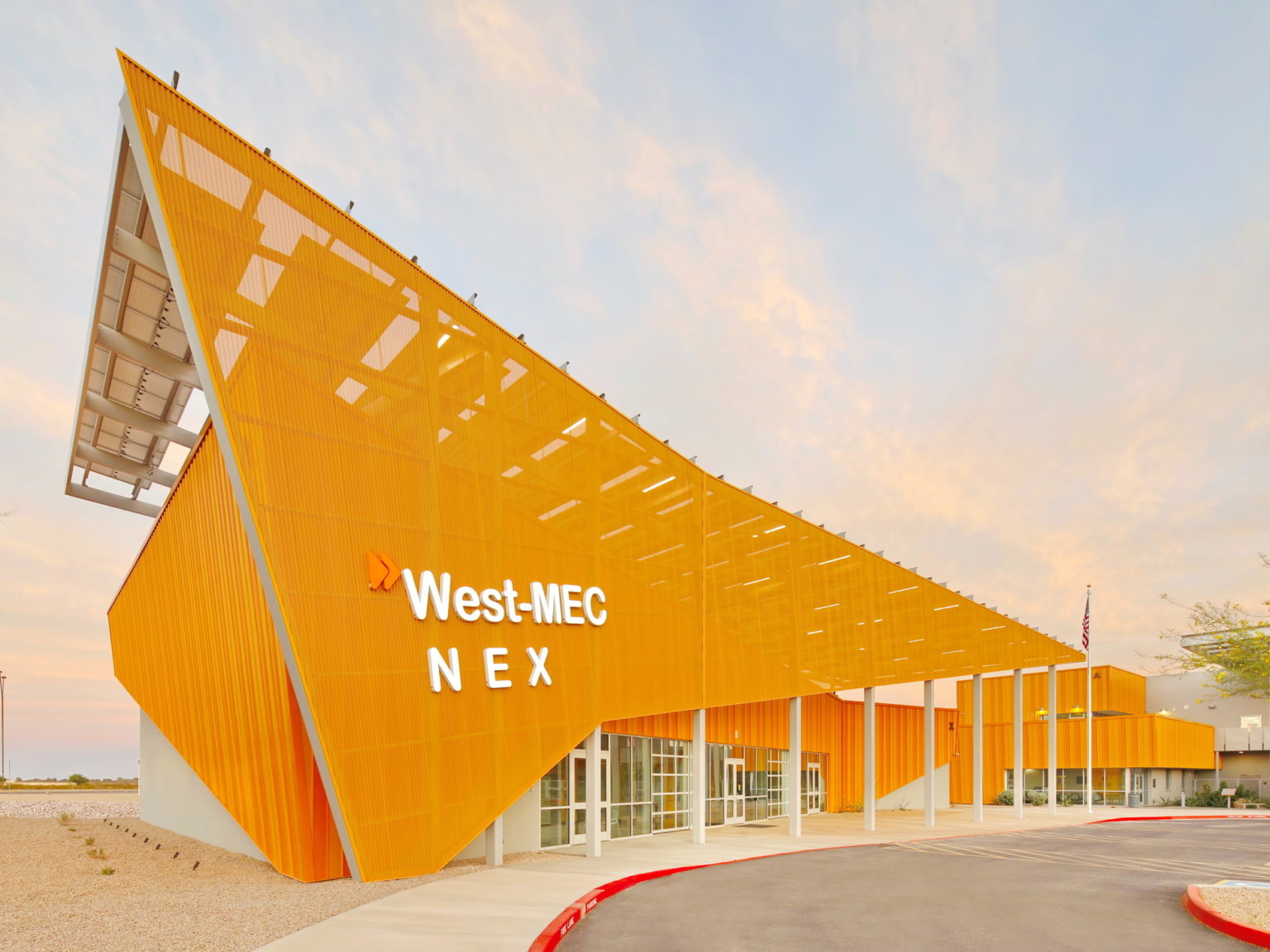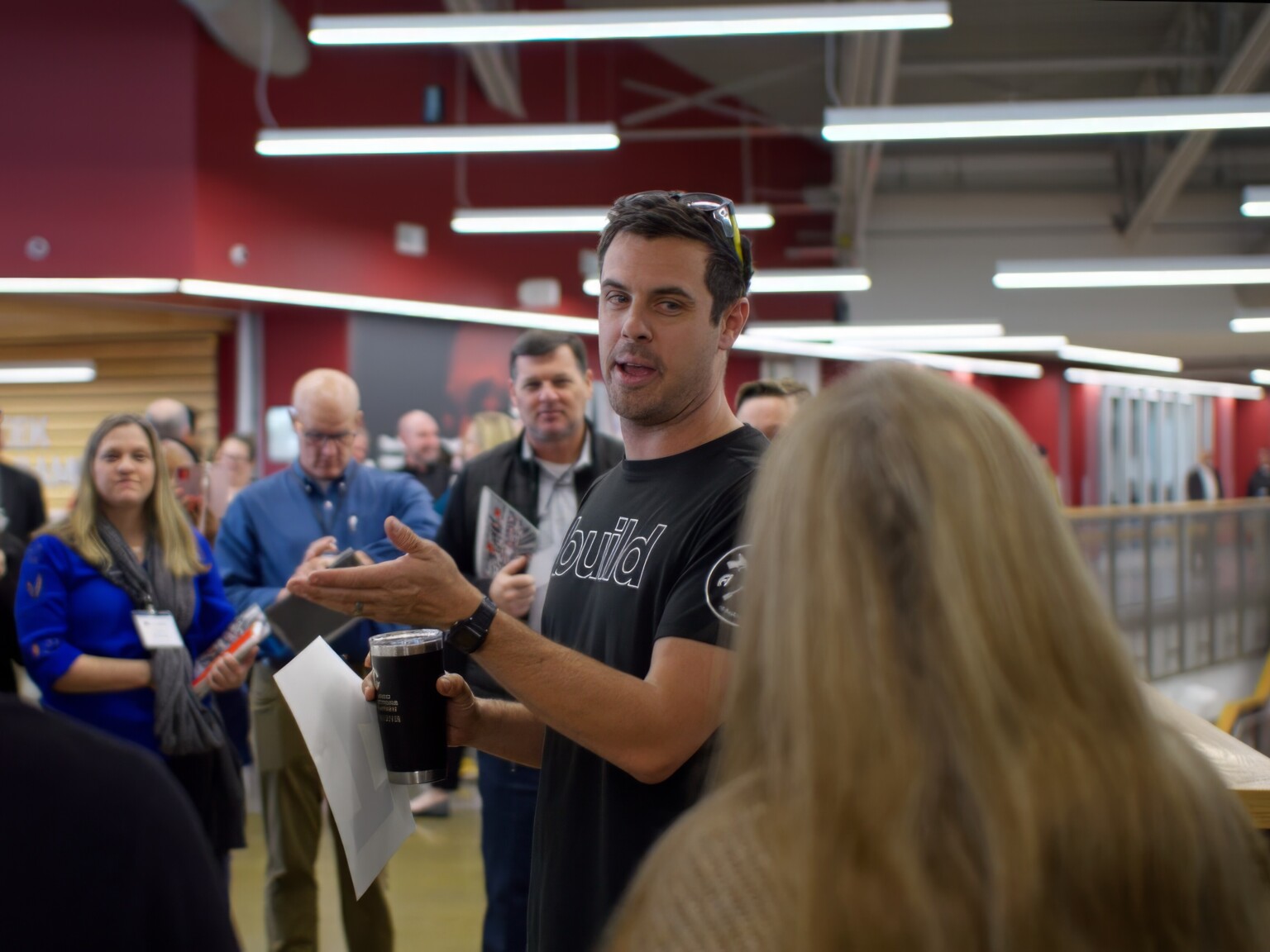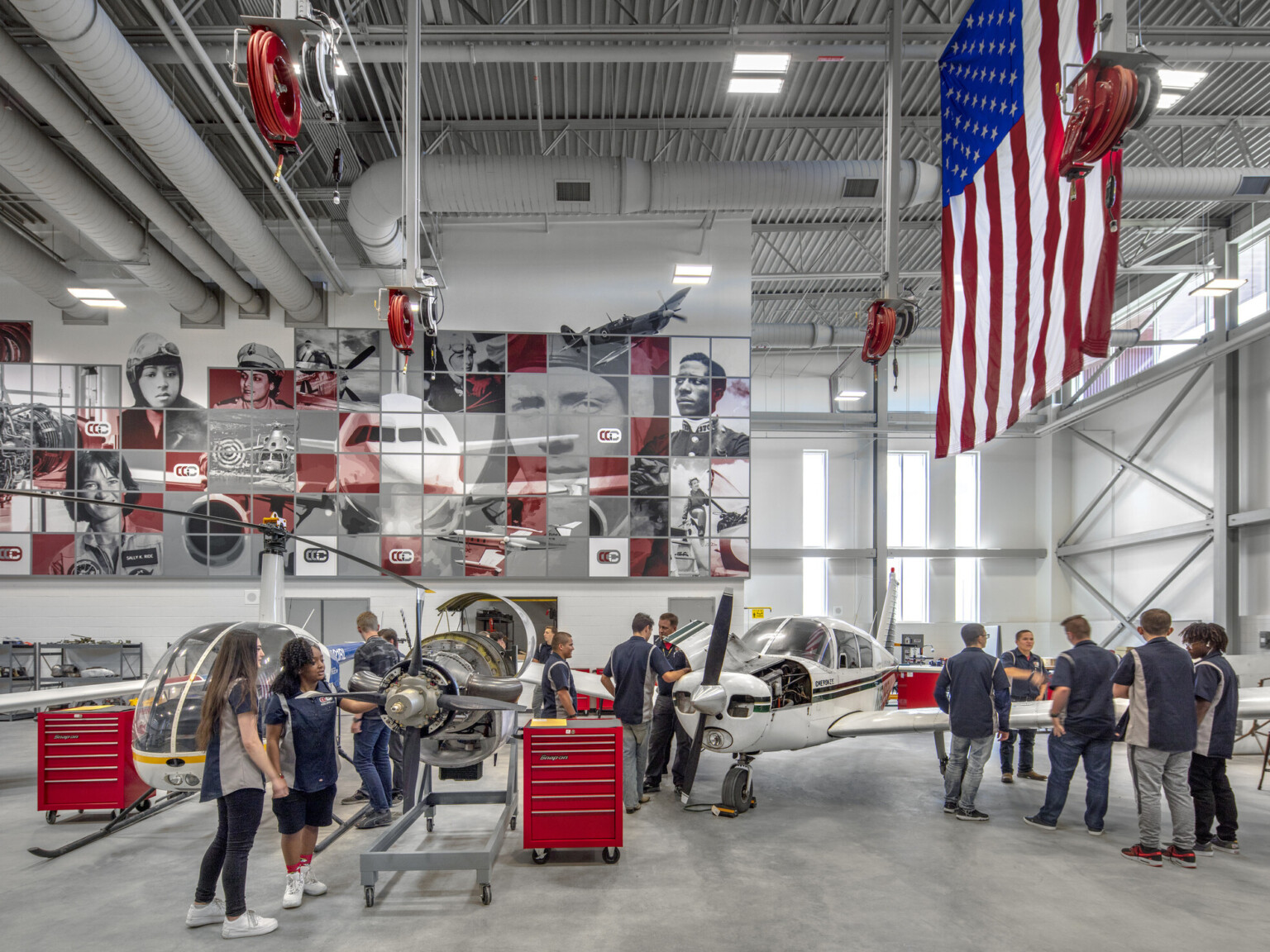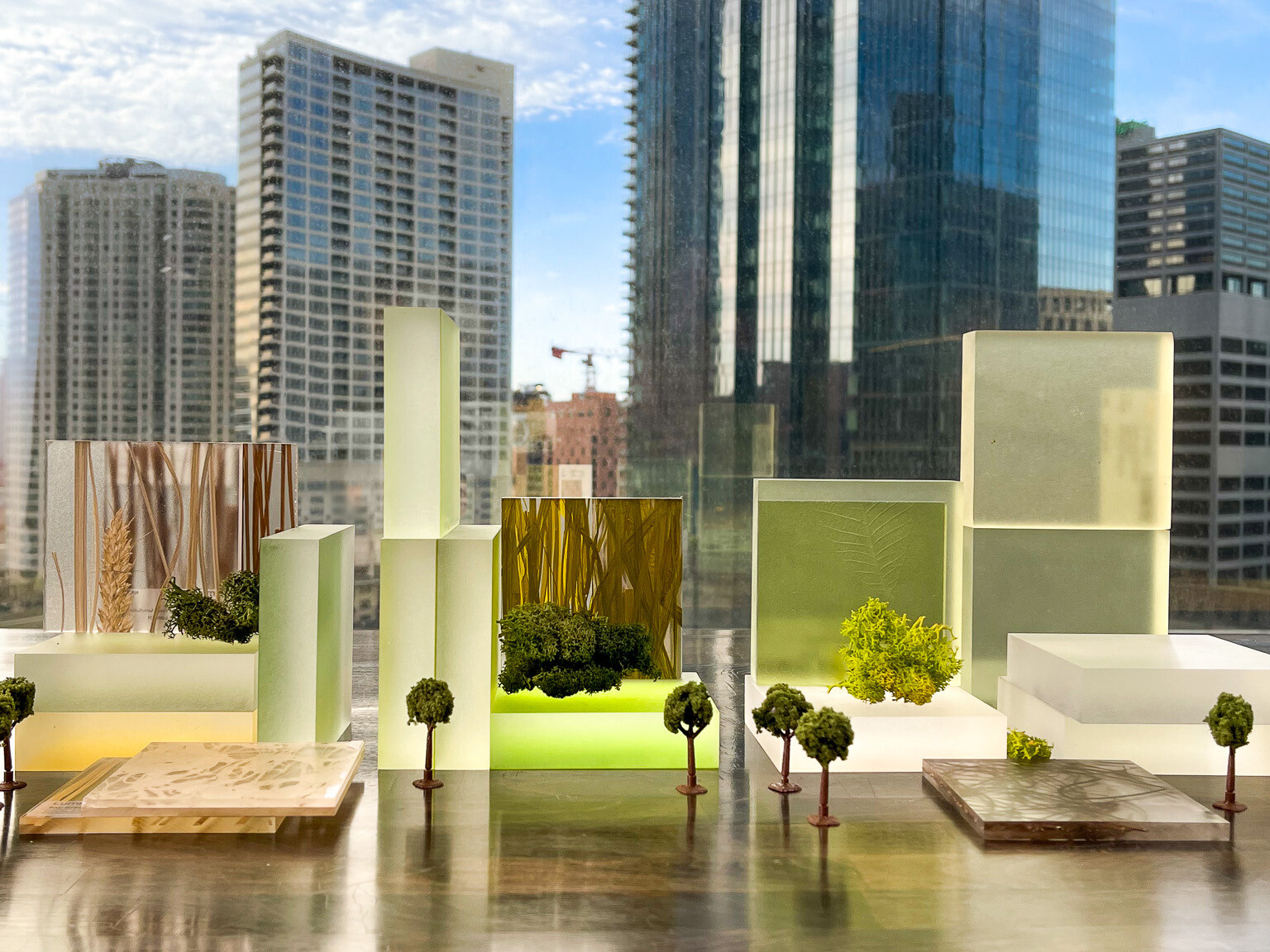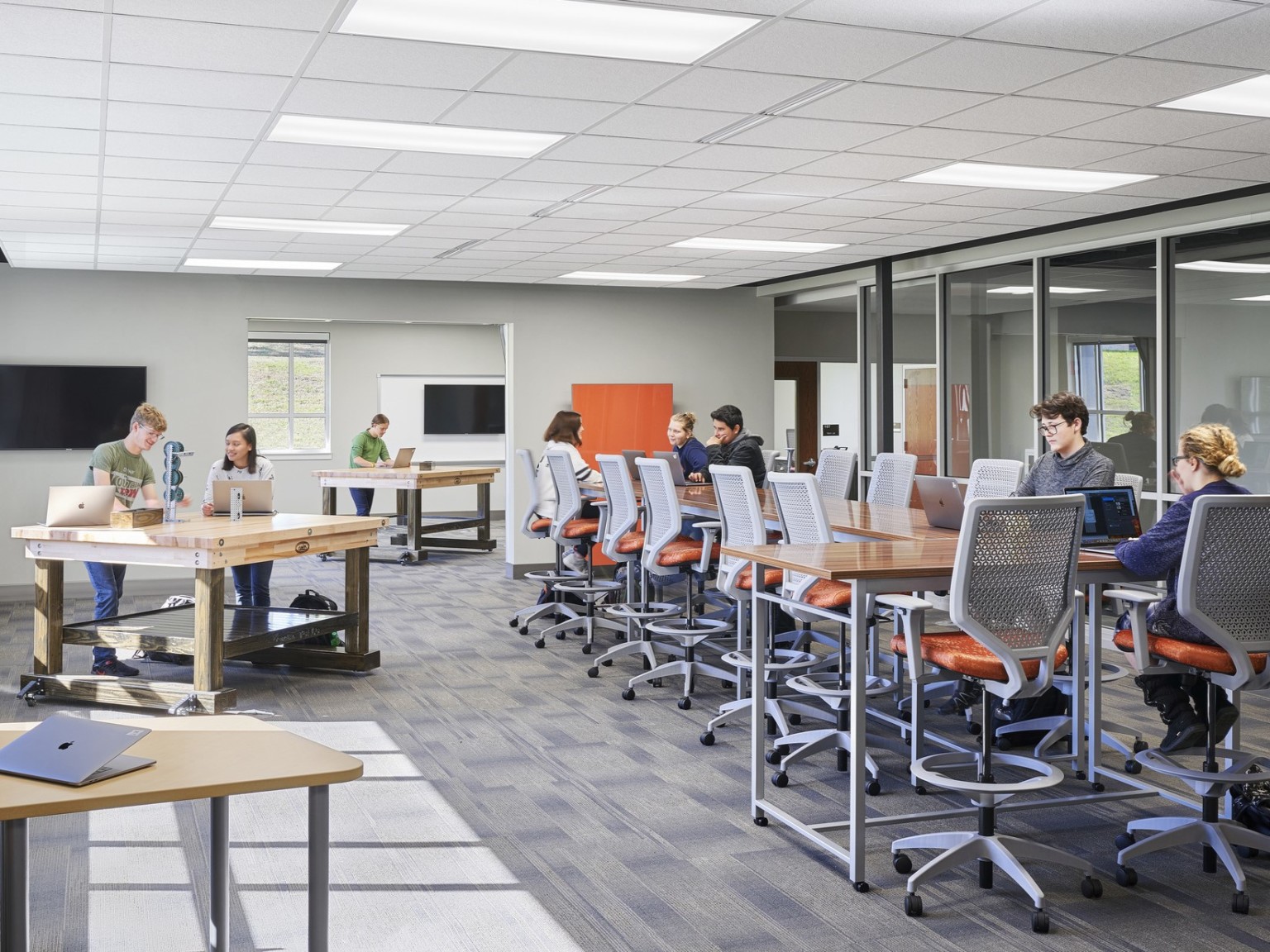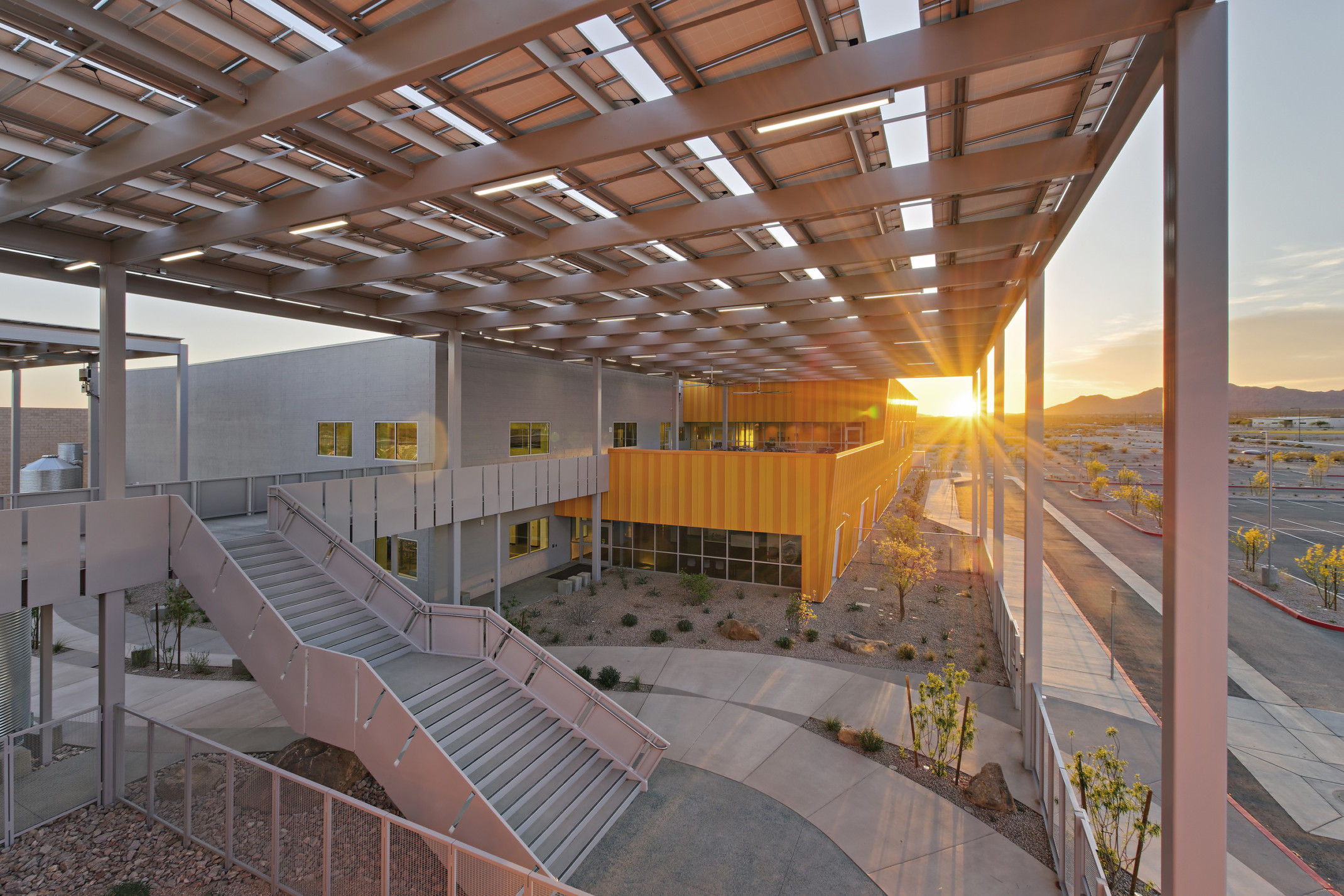
Client
Western Maricopa Education Center
Locations
Maricopa County, AZ
Students
45,000
Certification
International Living Future Institute’s Zero Energy
Career and Technical Education
West-MEC supports the partnership between education, industry, and community. In addition to serving high school students, West-MEC facilities accommodate evening adult education, training, and industry certification programs, which fulfill the district’s commitment to lifelong learners.
Innovation down to Nanoscale
Southeast Campus prepares students for high-demand, high-paying careers. The site is strategically located along the Loop 101 corridor, an area of exponential economic growth in the western Phoenix metro area and the inspiration for much of the campus’ curriculum. The building takes advantage of 1,000 feet of freeway frontage and acts as a giant billboard that highlights student accomplishments. Our interior design solution creates a storefront where students can shop their futures while supporting interdisciplinary programs that expose students to a variety of education and career opportunities. Phase I features career pathways in medical assisting, physical therapy, IT security, coding, advanced manufacturing, and welding. The key feature visible from the entry is the advanced manufacturing lab featuring semi-conductor manufacturing. Common spaces include community and industry event spaces that encourage interdisciplinary connection, networking, and economic partnerships.
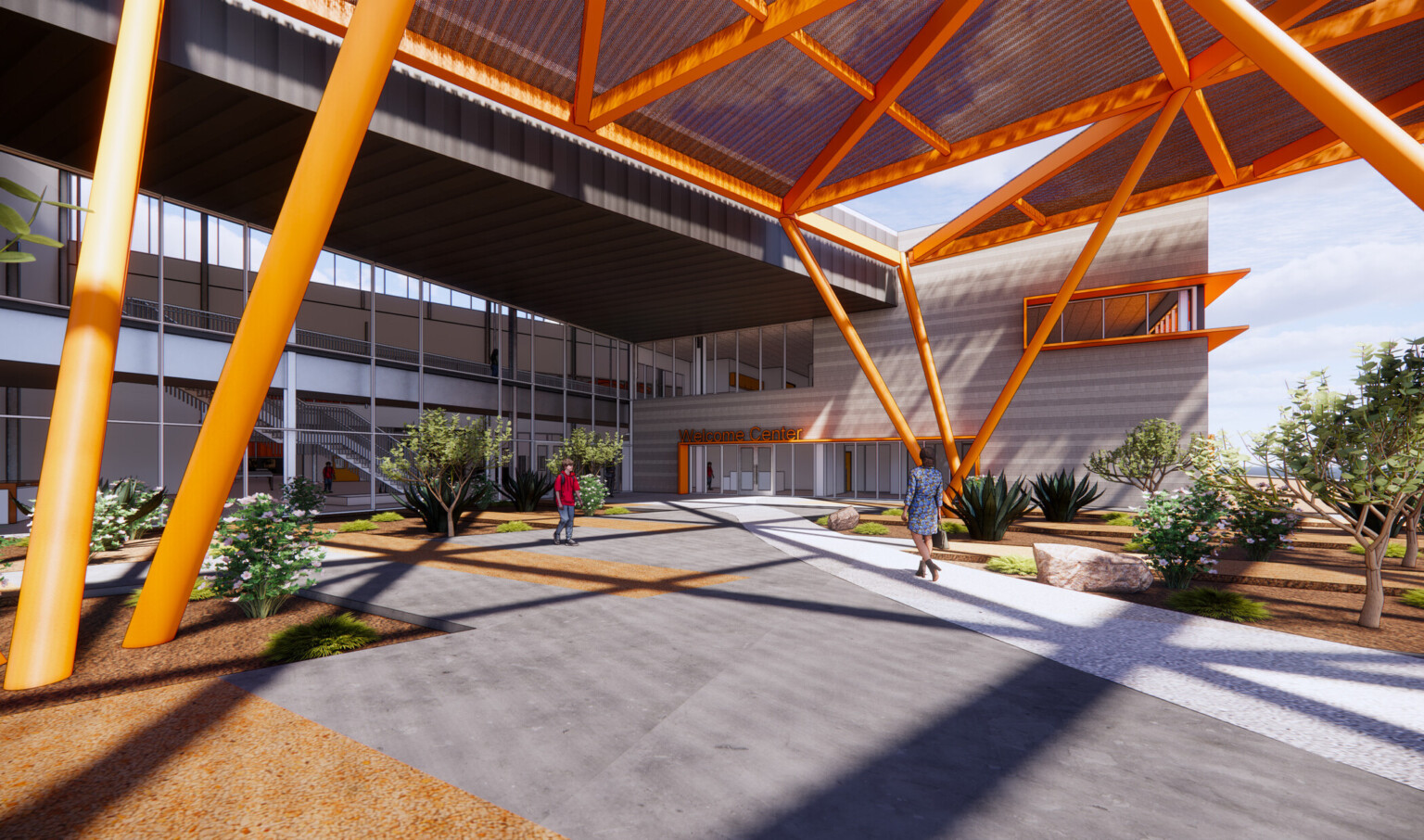
Advanced Workforce Training
Our 2010 design of the West-MEC Central Campus – Aviation building provides a dynamic specialty training center for high school and adult students. The facility supports a program consistent with up to 1,900 hours of instruction in general, air frame, power plant, and avionics as prescribed by the Federal Aviation Administration. To emphasize its role as a Federal Aviation Administration training center, the design features striping, as found on an airport tarmac. Dramatic super graphics are placed along this path to enhance the wayfinding experience. The Aviation Building is a new 47,000-SF pre-engineered metal structure that consists of classrooms, administrative offices, training areas, and workspace. The campus also includes a 38,000-SF precision-manufacturing and welding technology building; and a 20,000-SF support building/warehouse. A large assembly space known as the Demonstration Lab provides space for industry and educational partners to collaborate and gather.
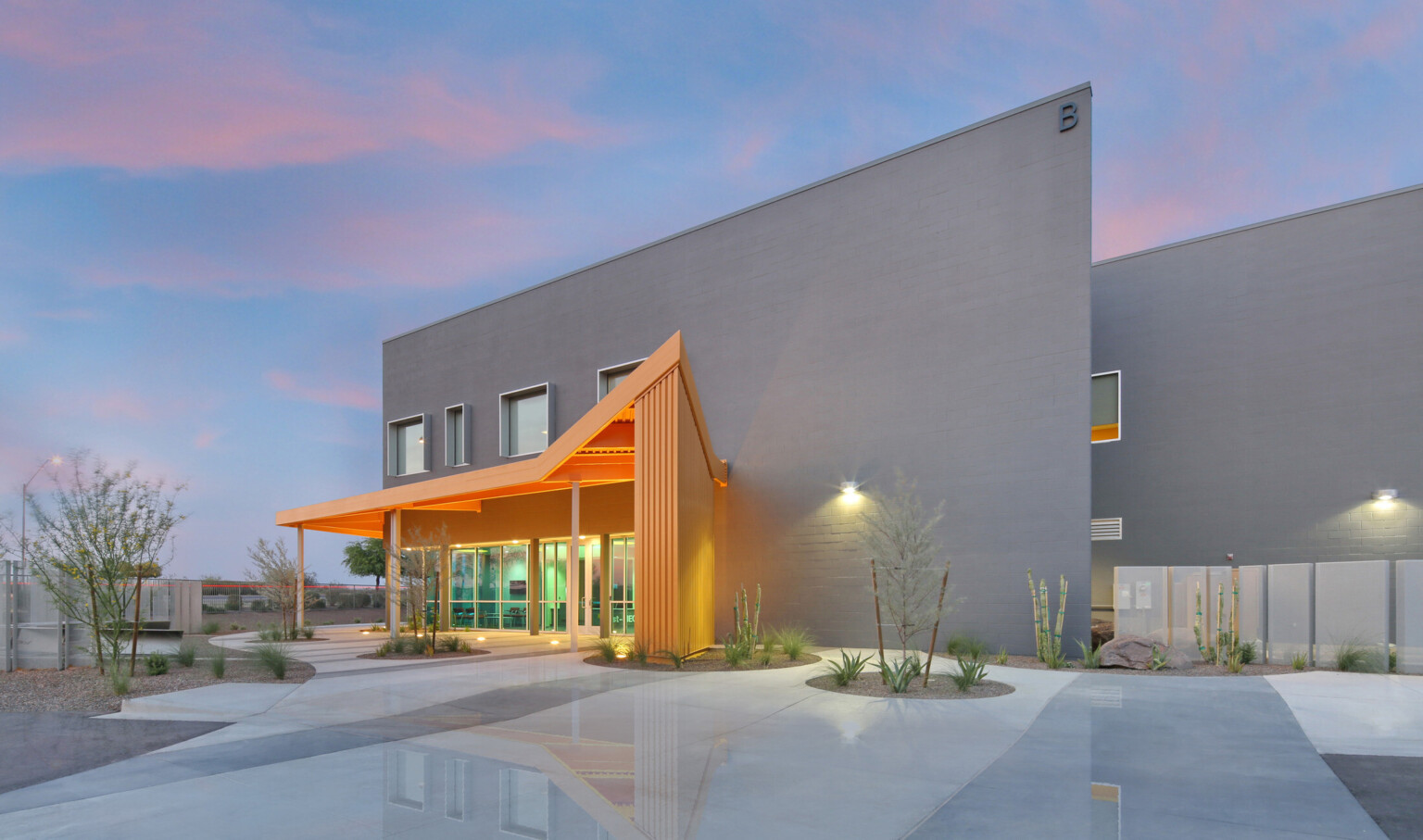
Transformation
The reimagination of the Northeast Campus includes renovating three existing buildings and adding two new buildings totaling 23,000 SF and 17,000 SF, respectively. Our design team worked closely with vested industry members in the design process to plan spaces that address industry needs, as well as high school requirements. Classroom-lab spaces for presentations and events balance spaces for heavy-duty, hands-on learning, such as automotive collision technology and construction technology with industry partners. The culmination of this project is the complete transformation of a former electrical distribution company into a state-of-the-art, world-class CTE campus.
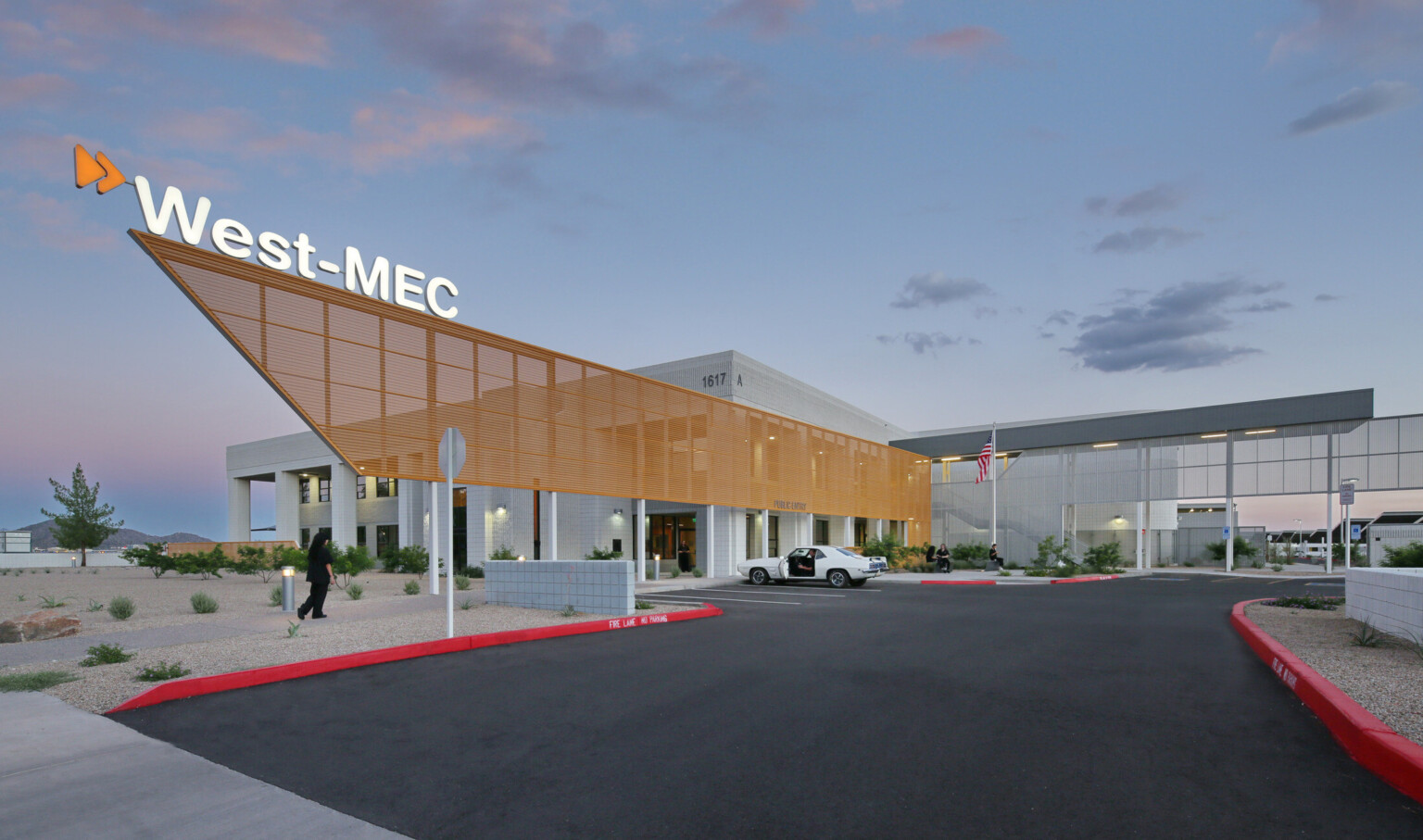
Nuclear to Net Zero Energy
The 2016 West-MEC Southwest Campus began a first-of-its-kind innovative partnership between a public utility – APS Palo Verde Nuclear Generating Station; Estrella Mountain Community College; and West-MEC. The primary goal of this triumvirate of industry, higher education, and secondary education is to encourage and provide a pathway into the nuclear power industry and augment an aging workforce. A highly structured learning approach utilizes four basic tenets of classroom instruction, hands-on learning, career-based experience, and leadership development. The National Energy Grid is the figurative and literal inspiration for the campus’ physical plan, while a photovoltaic canopy becomes a tool to teach students about renewable energy systems with a fully functioning industry flow loop.
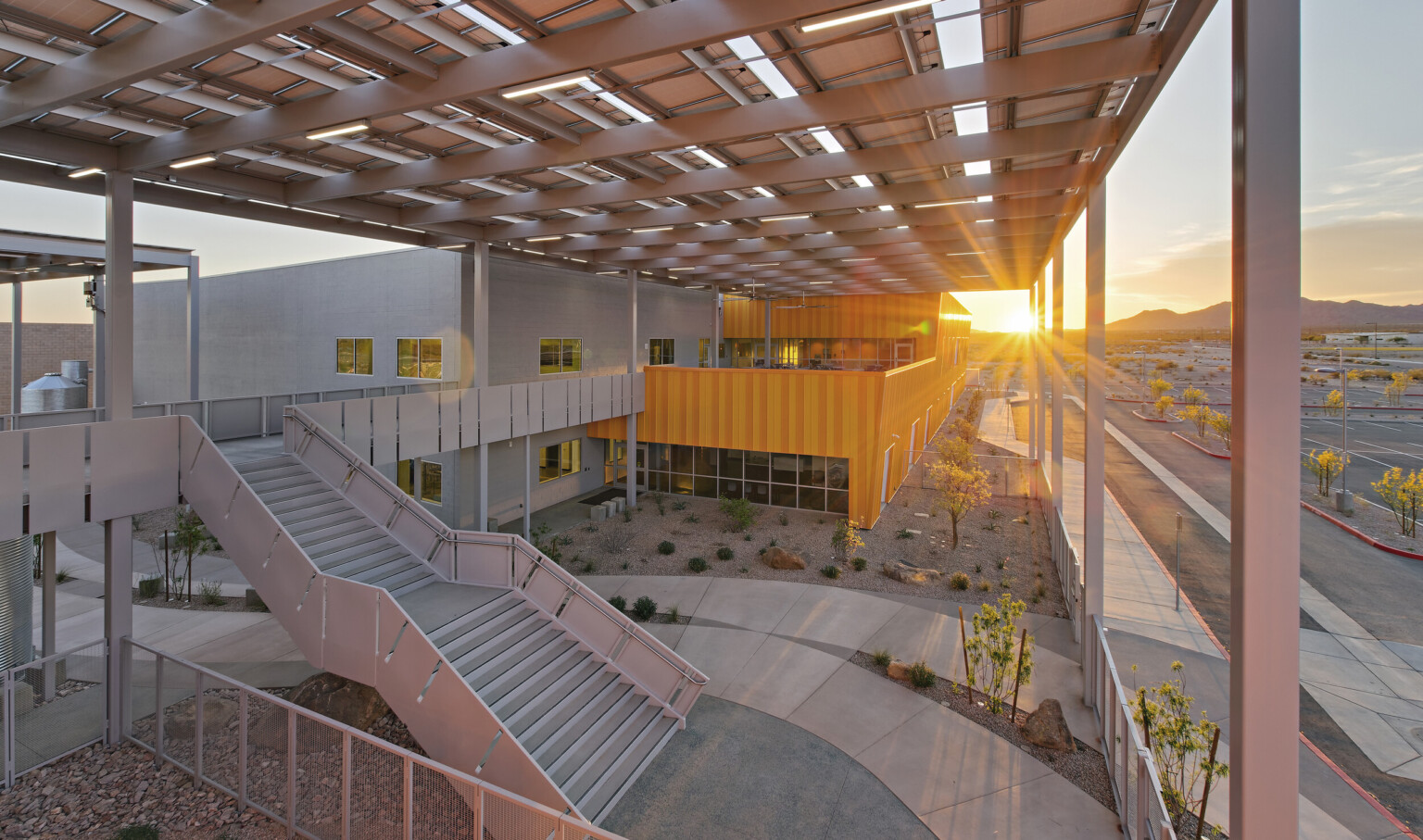
Energy efficient solutions across campuses include:
-
Water
High efficiency water fixtures and plumbing design, indigenous landscaping, and rainwater harvesting all help the district conserve water.
-
Electricity
High efficiency mechanical systems and controls, light fixtures, and building systems lend to reduced demands on the grid.
-
Solar
Photovoltaics are placed throughout each campus as energy producing parking canopies, rooftop systems, and campus-wide building and shade structures.
-
Building Placement
Careful placement of campus buildings and high performance building envelopes reduce demands on heating/cooling systems and help provide adequate daylighting for learning environments.
-
Windows
An abundance of windows and skylights provide ample daylighting into the learning environments reducing the demands for electric lighting and promoting the district’s approach to transparency in the classrooms.
- Shade
Landscaping, and building/photovoltaic canopies all provide a comfortable shaded micro-climate.

